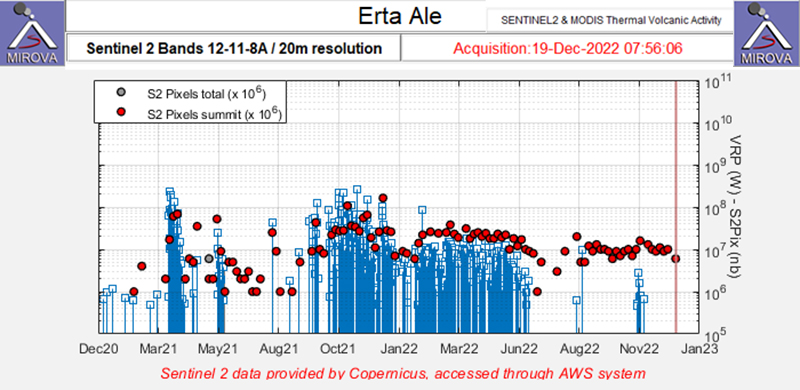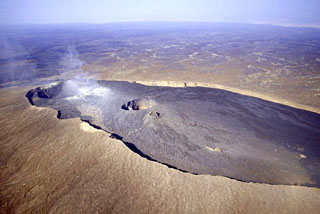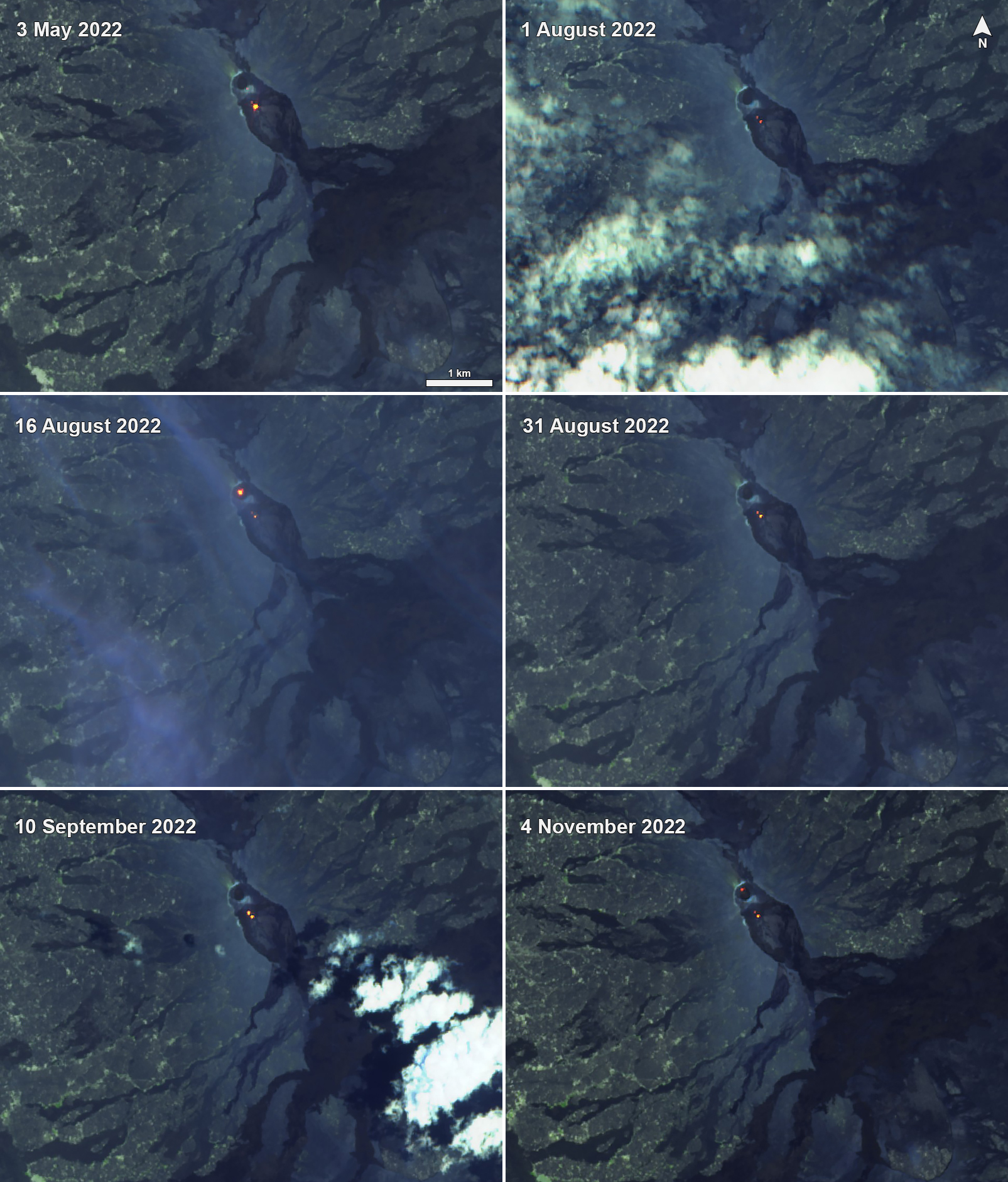Report on Erta Ale (Ethiopia) — December 2022
Bulletin of the Global Volcanism Network, vol. 47, no. 12 (December 2022)
Managing Editor: Edward Venzke.
Research and preparation by Paul Berger.
Erta Ale (Ethiopia) Persistent thermal activity at S crater, but intermittent at N crater, during May-November 2022
Please cite this report as:
Global Volcanism Program, 2022. Report on Erta Ale (Ethiopia) (Venzke, E., ed.). Bulletin of the Global Volcanism Network, 47:12. Smithsonian Institution.
Erta Ale
Ethiopia
13.601°N, 40.666°E; summit elev. 585 m
All times are local (unless otherwise noted)
Ethiopia's Erta Ale is an active shield volcano with a large oval-shaped summit caldera containing two smaller pit craters (North and South) that have exhibited lava lake activity for many decades. During October 2021-May 2022, the S pit crater had almost persistent thermal anomalies of varying intensity, while activity in the N pit crater was more intermittent (BGVN 47:05). This status continued through November 2022, although thermal intensities diminished after mid-June 2022. The volcano is monitored by satellites and visiting tour groups occasionally share their observations and images online. This report covers activity from May through November 2022 and is based on satellite infrared data.
Sentinel-2 images show the variation in heat signal intensity from the N and S pit craters during May-November 2022 (figure 115). Hotspots in the N crater were visible during two brief periods, while they persisted in the S crater. On 3 May there was a strong hotspot in the S pit crater along with a weak hotspot in the SSE part of the N pit crater. The hotspot in the S crater persisted throughout the reporting period, although by the end of June it had faded. On 16 August, after two weeks of heavy clouds, a strong thermal signal in the N pit crater was recorded; by 31 August it had vanished while the S crater anomaly remained weak.
During the reporting period, the MIROVA thermal detection system recorded numerous low-to-moderate power thermal anomalies during May through mid-June 2022, but none thereafter, except for one in mid-August (figure 116). Similarly, the MODVOLC thermal detection system registered four anomalies during 7 May-1 June, but none thereafter. These data are consistent with the Sentinel-2 infrared imagery (figure 117) that showed that intermittent weak summit thermal anomalies continued after mid-June, then became more consistent again after mid-August.
 |
Figure 117. Graph of Sentinel-2 (red dots) and MODIS (blue bars) thermal anomalies at Erta Ale for the 2-year period ending 19 December 2022. Courtesy of MIROVA. |
Geological Summary. The Erta Ale basaltic shield volcano in Ethiopia has a 50-km-wide edifice that rises more than 600 m from below sea level in the Danakil depression. The volcano includes a 0.7 x 1.6 km summit crater hosting steep-sided pit craters. Another larger 1.8 x 3.1 km wide depression elongated parallel to the trend of the Erta Ale range is located SE of the summit and is bounded by curvilinear fault scarps on the SE side. Basaltic lava flows from these fissures have poured into the caldera and locally overflowed its rim. The summit caldera usually also holds at least one long-term lava lake that has been active since at least 1967, and possibly since 1906. Recent fissure eruptions have occurred on the N flank.
Information Contacts: MIROVA (Middle InfraRed Observation of Volcanic Activity), a collaborative project between the Universities of Turin and Florence (Italy) supported by the Centre for Volcanic Risk of the Italian Civil Protection Department (URL: http://www.mirovaweb.it/); Sentinel Hub Playground (URL: https://www.sentinel-hub.com/explore/sentinel-playground); Hawai'i Institute of Geophysics and Planetology (HIGP) - MODVOLC Thermal Alerts System, School of Ocean and Earth Science and Technology (SOEST), Univ. of Hawai'i, 2525 Correa Road, Honolulu, HI 96822, USA (URL: http://modis.higp.hawaii.edu/).



